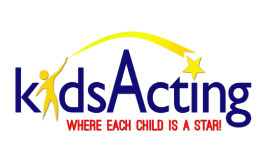Getting some kids to read is like pulling teeth. Actually, for most reluctant readers, pulling teeth would seem like a walk in the park— that’s how resistant they are to reading!
While most of us would agree that reading is good for children, we might not know why. The American Library Association cites findings from multiple studies about the benefits of reading, including higher scores on achievement tests in all subject areas, greater content knowledge, increased reading comprehension, greater vocabulary, better spelling abilities, and a better understanding of grammar.
So, what is a parent to do if his or her child would rather take a bath or eat Brussels sprouts than settle down with a good book? Here are some great tips for helping nudge your child to read:
- Mix it up. Not every child is inspired by books, so introduce a variety of materials, such as graphic novels, magazines, joke or riddle books, instruction manuals, or cereal boxes. It all counts as reading!
- Let them choose. If your child is a Pokémon fan, check out Pokémon books! If your kiddo is gaga over penguins, a nonfiction book on penguins might get her excited. When kids love the subject, they’re more likely to read.
- Take turns. Reading with a parent can be enough motivation for some reluctant readers. Take turns reading sentences, paragraphs, or pages – whichever method is best for your child.
- Keep it casual. Too much pressure to read makes reading seem like a chore; and no one likes to do chores!
- Create some clutter. Pick out books similar to ones that your child enjoys and leave them in strategic places around the house, such as next to the couch or by his bed. He may just pick one up.
- Embrace boredom. Screens are the enemy of reading time. Schedule some screen-free windows of time in your home to encourage your child to reach for a book instead of the remote.
- Model. If you sit down with a book on a regular basis, your child is more likely to do so. I like to be in front of the fireplace reading when mine come downstairs in the morning. I put a book out for each of them, and they settle down next to me without me saying a word!
- Get silly! Let your child read in silly places if that’s what gets her reading. Book time in the bathtub? Sure! Reading by flashlight under the table? Great!
- Make it a game. Create a Bingo board with titles of books your child might enjoy that are at his reading level. Together, brainstorm a fun reward for a completed board.
- Put on a play. Choose a play to read together and assign parts. By the time you are ready for the big performance, your child will have had loads of reading practice.
- Read to a pet. Sometimes it can be more enjoyable to read to your dog, cat, or fish. If you don’t have a family pet, read to a neighbor’s.
- Read to someone younger. Giving your child an easier book and having her read to a younger sibling, cousin, or friend lets her feel like an expert and helps build that reading confidence.
- Start a subscription. There are many different children’s magazines in production. Choose an appealing one and subscribe. Your child will be excited to receive mail and just might start thumbing through his new material.
- Read aloud as a family. Set aside time to read aloud on a schedule that works for your family. Choose a book at, or slightly below, your child’s reading level to make the experience enjoyable. Make it fun by encouraging each other to read with voices that fit the characters. Bonus: summarize each book or chapter as you finish to promote comprehension.
- Check it out. Libraries offer a number of book sets that include a book, plus an audio cd or tape. Your child can follow along with the book as he listens.
- Go high tech. Kids love anything to do with technology! Your child can record herself reading a story and can follow along in her book as she plays the recording.
Please note— while it is not uncommon to have a reluctant reader, if a real unwillingness or struggle to read persists, it may be a good idea to rule out a learning disability, such as dyslexia. Early intervention is key, making it important to differentiate between a reluctance to read and a real issue with reading. Until next month, happy reading!
By Alison Bogle an Austin-based freelance writer and mom of three.
















